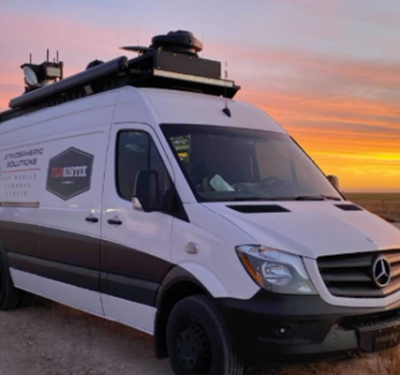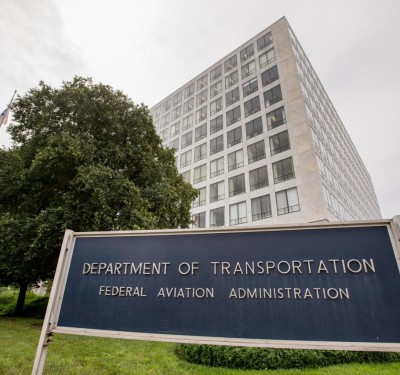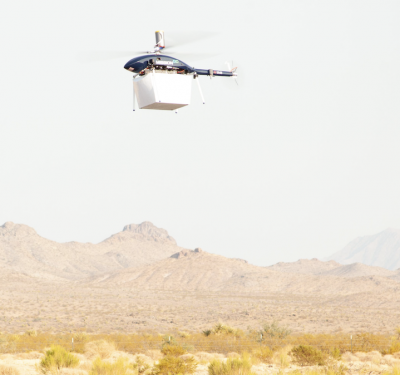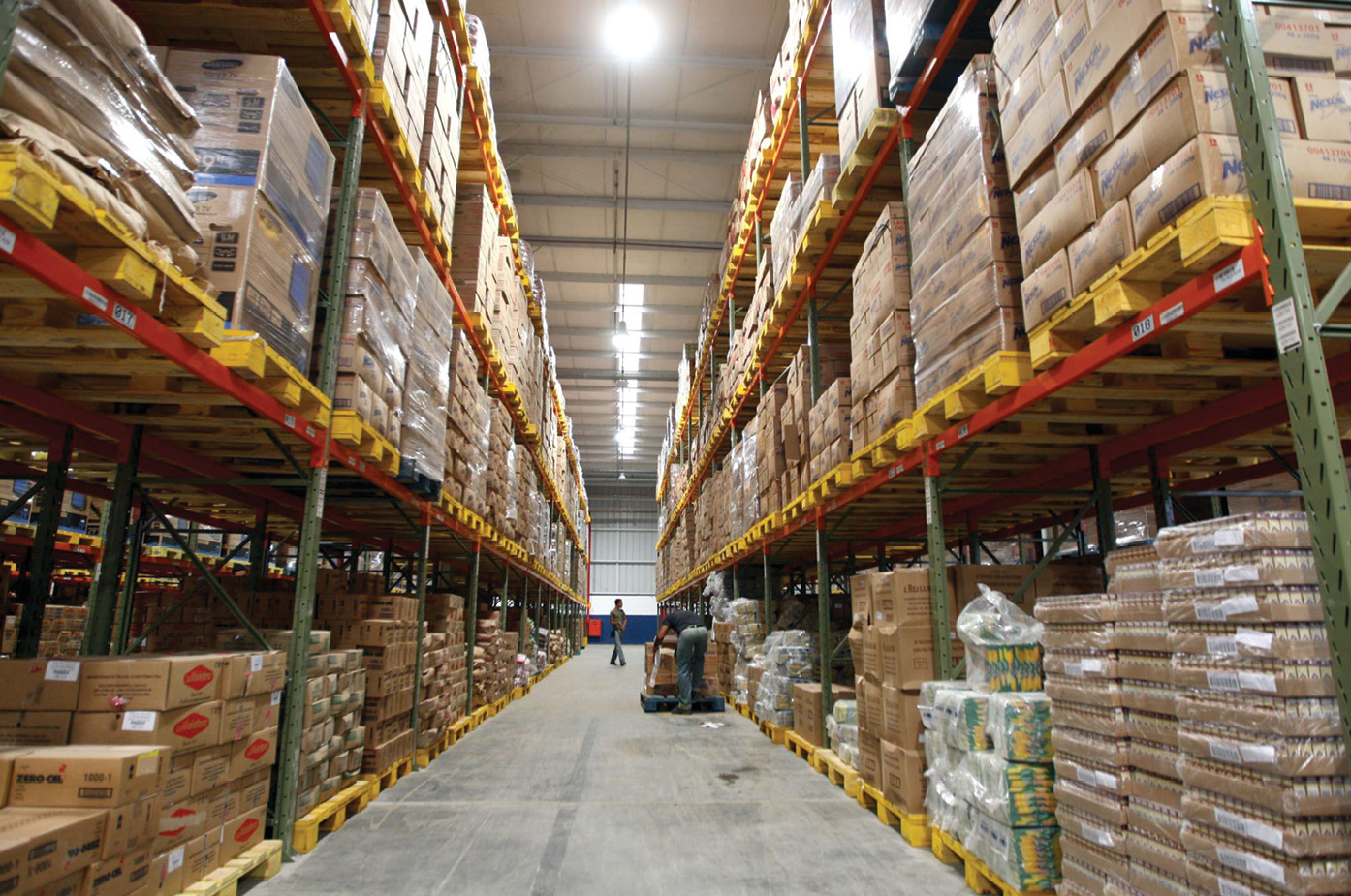
Amazon has its dancing “pick and pack” robots, and now Walmart has flying inventory management drones.
The retail giant demonstrated its prototype solution at a recent press event, saying the company is six to nine months away from introducing unmanned aircraft systems or UAS in its distribution centers to help with inventory management. The company’s goal is to reduce the time it takes to check the stock in a warehouse from one month to one day.
The announcement opened a window on a substantial new application for unmanned aircraft—the tracking of trillions of dollars of warehouse stock, newly manufactured goods, raw materials and other assets as they move through the supply chain.
While the details about Walmart’s devices are still fuzzy, the firm said in an October 2015 filing with the Federal Aviation Administration (FAA) that it had been using a DJI Phantom 3 and a DJI S900 for indoor testing. The firm reportedly also has a long history of using radio frequency identification, or RFID, to manage its inventory. RFID tags are encoded with information and attached to an item, carton or pallet. Passive tags send that information when triggered and powered by an RFID reader. Active tags have batteries and broadcast their contents. Passive tags are far less expensive and the usual choice for inventory operations.
Walmart told reporters its UAS would be outfitted with custom software and a camera that takes 30 photos a second as they search for inventory in the wrong spaces. When a drone finds an item in the wrong slot, it flags an “air traffic control” employee, who sends a worker to move the item. Walmart indicated in its FAA filing that it would like to extend its work with UAS outdoors.
Walmart may be the highest-profile retailer to announce its interest in using drones for inventory management, but the unmanned industry has been working for sometime toward UAS-based solutions for tracking assets large and small. The Fraunhofer Institute for Material Flow and Logistics IML in Dortmund is developing “InventAIRY,” another system that would use swarming autonomous multirotor vehicles to track products in a warehouse. The French company Hardis Group filed a patent for an inventory-taking drone early in 2015, according to a press release.
PINC Solutions of Alameda, Calif. is developing a drone for inventory reconciliation that incorporates RFID, OCR (optical character recognition) and a bar code reader. The drones would scan the contents of the warehouse, noting each item and where it is. That data would be used to reconcile the information in the inventory management system with what is actually on the warehouse floor.
“What it fundamentally is doing is ensuring that the inventory is indeed in the place and at the quantities that you expected,” said Matt Yearling, PINC’s CEO.
For large operations with hundreds of distribution centers across the country the cost of lost inventory can be substantial.
“Your inventory management system says you’ve got five pallets of this but you can only find one. Each pallet is $50,000—now you’ve got a problem,” Yearling said. “That’s really fundamentally it. If you are operating at scale, that’s where this is important.”
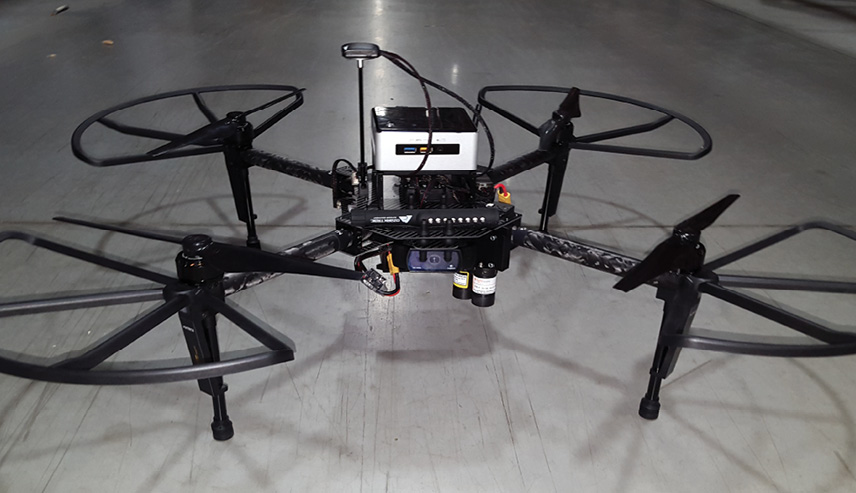
Learning As They Fly
PINC builds its own platforms from off-the-shelf components, with one key exception—a very directional RFID antenna. That antenna narrows the sensor field so that it gives the RFID reader a high degree of confidence that it’s looking at a specific item.
“It’s just like a spotlight on the asset,” Yearling said.
In the process of scanning the shelves, the drones are also learning the layout of the warehouse, building knowledge of where they are in the building as they go. A PINC drone uses both RFID and OCR to determine its location within the warehouse. The drone can read the tags on the shelves as well as on the items in stock, keeping track of its direction and speed as it moves around. The processing power to do this is contained on the platform so the drone is not dependent on an external link or network.
“We do simultaneous location and mapping (SLAM) inside,” Yearling said. “…Once you’ve identified where you are, then as you’re looking at a piece of inventory, you know how fast you’re going and where you’re going. You use that as well as information collected from what you’re looking at. It’s all those multiple reads that we feed into our algorithm to determine where the location of that asset is.”
The drones must learn their environment, Yearling said, because it is not realistic to add a layer of infrastructure across a firm with hundreds of large distribution centers or ask the company to change the way it labels its inventory.
“(A drone) has to understand where it is just like a human,” Yearling said. “I walk down the rack I know where I am based on the labeling on the rack. …We have some understanding of the environment. We navigate based on the environment and we read the labels on the inventory in whichever way is appropriate based on how they do it.”
For a million-square-foot warehouse, Yearling estimated it would take “less than a handful” of drones—typically working during a relatively quiet period like the early morning hours—to handle the inventory reconciliation work.
Yearling applauded Walmart’s announcement.
“I think the way that Walmart is talking (about using) drones is much more in alignment to useful use cases.”
If inventory drones are successful in the distribution centers it is possible they will find new uses further down the retail chain, suggested Clark McAllister, the founder of ADASA Inc. The firm, which has a mobile RFID tag encoder and is working with PINC, has been looking at deploying RFID-reading drones in retail stores.
“The retail floor is pretty chaotic, inventory changes pretty rapidly and RFID is a proven solution for knowing what a retailer has in stock and where it is,” McAllister said. Using an automated drone to scan RFID tags could ultimately enable “push button inventory,” he said, and that opens opportunities.
With very accurate inventories retailers can use their stores as a forward stocking location to customers, he said, “So those customers can, for example, know ‘Hey, can I get this on the street?’”

Trillion Dollar Industry
PINC Solutions didn’t start off working with drones, which is still a small part of its business. In operation since 2004, they offer a real-time location system based on proprietary software that uses RFID and GPS on other kinds of mobile platforms to locate and identify assets as they move through the supply chain. They work with automobile manufacturers to keep track of vehicles in densely-packed parking lots and with firms like energy companies that must be able to find tools and materials—say pipes, drill bits or reels of cable—wherever it is stored across a large laydown yard. They also help firms track the trailers used to carry freight.
Locating trailers is about more than knowing where a particular trailer can be found among a thousand others stored in a yard. It is also about tracking that trailer so it, and its contents, get to the right place at the right time.
It’s not unusual for an automotive company to have 700 trailers out in the yard with supplies for their manufacturing plant, Yearling explained. They have to “get the supplies to the relevant dock to feed their supply chain in the appropriate manner and time frame.”
Overall the sector is worth some $1.5 trillion of which about two thirds relates to moving and logistics, Yearling said.
Taking It Outside
PINC is now ready to integrate drones across all four areas of its business. The firm was granted a Section 333 exemption last fall for the PINC Air, a proprietary drone able to operate both indoors and out.
“This is a major milestone in the development of PINC Air,” Yearling said in a statement. “With the FAA’s primary concern being safety, this exemption grant supports our design goal of safely collecting supply chain inventory data in industrial environments, away from any residential areas. PINC Air operates in geo-fenced commercial zones, under the supervision of qualified personnel, while following a pre-programmed path to ensure safety and effectiveness.”
Dubai-based Exponent Technology Services has already been using drones to track outdoor assets, developing custom solutions using UAS equipped with auto-ID technologies.
Exponent developed a solution for Dubai-based AGE Steel, which realized three and a half years ago that it was losing up to 20 percent of its stock.
“During the building boom, [that] was acceptable,” Maroun Hannoush, CEO of Exponent’s Montreal division told attendees at the XPONENTIAL 2016 conference in May. But as Dubai’s construction industry began to correct itself, margins tightened and AGE started wondering where all its steel beams were going.
It turned out that some beams were literally melting in the summer heat, and workers were disposing of the faulty product without communicating back to the sales office. The company’s salespeople still thought they had X amount of inventory, but the truth was they really only had Y.
Further, with a steel storage yard of 10,000 square meters, individual bundles of product were getting lost. Finding a particular package—with a specific size, grade, and country of origin—wasn’t always easy.
Exponent developed a solution in which steel bundles are tagged with an active RFID tag. A drone flies over the storage area twice a day to identify the location of each bundle.
“Now they can put the bundles anywhere,” Hannoush said.
Finding the Right Car
Exponent then developed a system for a car dealer that had 45,000 cars across 250,000 square meters of storage yards. Hangout said this dealer employed runners to manually go out into the yard and find a specific car. Pulling 20 cars for a dealership could take days.
Exponent outfitted another of its drones with an RFID reader and tagged every car coming into the storage yards with an RFID tag, this time a passive one laid on the dashboard. Because the dashboard is flat and the tag points upward, the dealership could use passive tags, which cost just pennies. The drone then flies the length of the storage yard, 20 feet above the ground at 15 feet per second, picking up the location of the cars and any relevant information (VIN, color, make, model, etc.).
An Exponent case study claims switching away from human runners saves more than 1 million AED ($272,000 USD) per month.
Exponent generally uses both fixed-wing and multirotor vehicles that it builds itself from components though it has also modified an off-the-shelf platform, an Align 650, to carry an RFID antenna and onboard processor. The drones fly mostly autonomously in a geofenced area defined by the company. Clients can monitor and track all assets live as the flight takes place through Exponent’s Secure Portal.

“Our portal provides all the key read statistics on the tag and even has the ability to encompass business metadata—allowing our system to be a standalone inventory tracking system,” the company said in an emailed response to a question.
If a client does not use an RFID-based system Exponent can set one up including developing how to assign unique codes to assets, determining where assets should be stored and procedures for checking materials in and out.
The firm will also train the client’s staff on how to operate, set up and initiate autonomous flights—with safety training on how to manually take control of a drone if required and to land it manually if required. Typical implementation time for a drone-based RFID tracking system is 30-90 days, less if the RFID management system is already in place.
Opportunity
Though many firms have transportation management systems and warehouse management systems, the process often breaks down when it comes to managing trailers and assets store outside, Yearling said, because that function has not benefited as fully from technology. Drones can help change that.
“We have means of orchestrating and optimizing the process and minimizing the amount of equipment, people and time to move goods from point A to point B,” he said.
Yearling believes there is also real potential for drones in inventory reconciliation and said many customers would be “looking at deploying (drones) in production mode” in the next 6 to 12 months.
“Full implementation of inventory drones, however, is still a ways off,” he said. “It’s much a pilot right now until (companies) recognize the value and they validate that it could operate at scale.”
The need for such a solution though is clear.
“As we all know humans are inherently unreliable sometimes—that’s when errors occur. Even when you’re putting products away on shelves, you may be thinking you’re putting it on the right shelf, when you are putting it somewhere else. Or that shelf that you said you had meant to put it on is full and you say ‘I’m just going to drop it somewhere else,’ then you forget to tell someone. You forgot to put in the system. Then guess what, you’ve got a problem.”
This is an issue for even the biggest operators with the most resources, Yearling said, “I know because I’ve seen inside the fulfillment centers. I’ve talked to them.”
“Everybody, and I say everybody, has this problem.”


